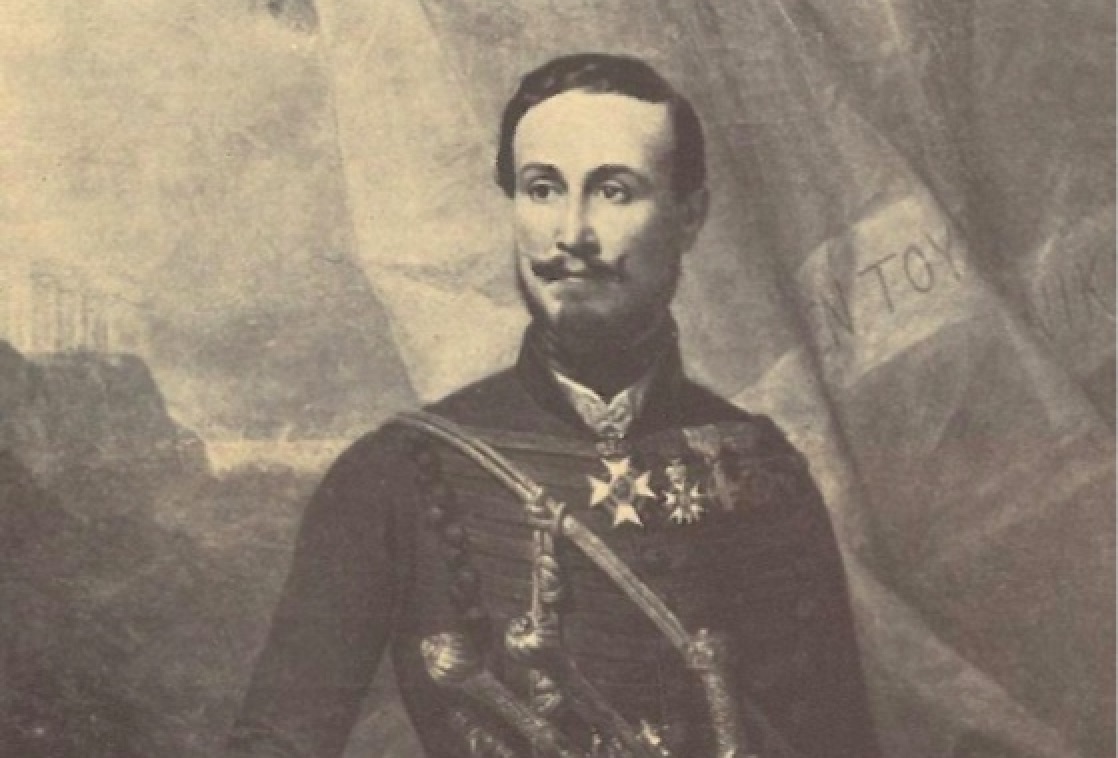
On this day in 1820, a Greek farmer discovered the Aphrodite of Milo, better known as the Venus de Milo, one of the most representative statues of the Hellenistic period of Greek sculpture, and one of the most famous sculptures of ancient Greece.
Created sometime between 130 BC and 100 AD, it is believed that it represents Aphrodite (called Venus in Roman mythology), the goddess of love and beauty.
The statue was found half-buried, in two pieces, on April 8, 1820, when a Milos island farmer named Giorgos (or Theodoros) Kentrotas was digging in ancient ruins in his field to find some stones he needed for his farm.
Yet, instead of ordinary stones, Kentrotas found a statue that turned out to be one of the most famous statues in the world — the Venus de Milo, or Aphrodite of Milos.
Nearby in the same area, French naval officers were conducting excavations for ancient artifacts. When the pickax of the Greek farmer hit something unusual and he dug out a piece of a marble statue, two French navy sailors who were participating in the excavations took notice.
Kentrotas sensed that his discovery was valuable, and tried to cover the marble statue piece with dirt again, fearing that the French would grab it or would make him sell it to them for much less money than it was worth.
However, the French were not fooled by the farmer and they gathered around his digging spot — urging him to dig further. Kentrotas complied and kept digging until the entire sculpture was revealed.
The fragments of the sculpture were moved to Kentrotas’ sheepfold, while the French had already begun to communicate with consuls and ambassadors back in their offices in Constantinople and Smyrna.
Olivier Voutier: The French naval officer who discovered Venus de Milo
Olivier Voutier was the French naval officer who was heading the excavations for antiquities on Milos. He had studied archaeology, so when he saw the jaw-dropping discovery, he informed his compatriots that he did not have enough money to buy the statue.

Along with the Venus de Milo, the French discovered two dedication plaques and a base plinth with an inscription of the name of the sculptor.
The missing arms of the statue were not found, however, and Voutier’s sketch made at the scene shows Venus without arms.
After the discovery, the French started negotiating the buying price for the statue. The initial price offered was 400 piasters, known in Greece at the time as grosi (γρόσι), the currency used by the Ottoman Empire until 1844.
However, negotiations became complicated as other parties became involved in the negotiations, making Kentrotas’ opinion secondary. The Ottomans and French Admiral Jules Dumont d’Urville entered the negotiations, which resulted in the delay of the transfer of the statue to France.
200 Greeks Killed Trying to Keep Statue in Greece
According to Greek historian Dimitris Fotiadis, the islanders found out about the discovery and transaction of Kentrotas with the French and reacted with justifiable anger. The residents of Milos took action to try to stop the French from loading the Aphrodite of Milos onto the French ship.
In the skirmish that ensued, the French soldiers shot at the angry islanders and killed several of them. The French finally managed to put the statue on board and leave for Piraeus — but hundreds of Milos residents followed the ship in their own small boats.
When the French ship docked at the port of Piraeus, the Milos islanders and other Greeks who had been informed of the struggle to keep the statue gathered at Piraeus. This time the Greeks’ mission was to stop the ship from leaving for France — and to take their statue back.
Fotiadis wrote that at least one thousand Greeks who were at the port clashed with the French ship’s crew, as well as Ottoman soldiers who had been sent there to protect the French.
More than 200 Greeks were killed in the fight and finally, the statue of Aphrodite of Milos sailed for France on March 1, 1821, just twenty days before modern Greece declared its independence from the Ottoman Empire. The statue was presented to King Louis XVIII.
Later, the King handed the priceless Greek statue over to the Louvre Museum.
In 1960, a commission of Turkish archaeologists presented a petition to André Malraux demanding the return of the Venus de Milo.
This request was based on a report by the jurist Ahmed Rechim, who accused the French of having stolen the statue and said that it belonged to the Ottoman Empire. Malraux declared the idea “cultural blackmail” and refused to return it.
She still stands today on display at the Louvre, in mute testimony of the wholesale looting of Greek art and artifacts over the centuries.
See all the latest news from Greece and the world at Greekreporter.com. Contact our newsroom to report an update or send your story, photos and videos. Follow GR on Google News and subscribe here to our daily email!



